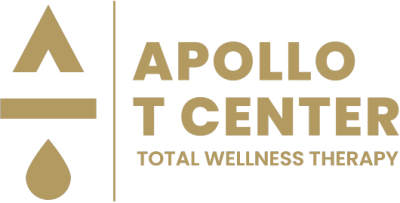FREQUENTLY ASKED QUESTIONS
TESTOSTERONE THERAPY

Normal testosterone levels in males test at 300 to 1,000 nanograms per deciliter (ng/dL) and for females are 15 to 70 ng/dL.
We look at the testosterone measurement as well as the presence of select symptoms and/or signs. These elements together give us a more complete picture on whether a diagnosis of testosterone deficiency is appropriate.
The Panel defines the threshold for low testosterone as being consistently below 300 ng/dL on at least two serum total testosterone measurements obtained in an early morning fashion.
Hormone therapy is known to improve mood, energy levels and a patient’s sense of well-being. Other benefits include improved sexual function, lean body mass and muscle strength, erythropoiesis and bone mineral density (BMD), cognition and some benefits on cardiovascular risk factors.
Potential Benefits of Testosterone Replacement Therapy:
- Improve sexual desire and function
- Increase bone mineral density
- Improve mood, energy and quality of life
- Change body composition and improve muscle mass and strength
- Improve cognitive function
Testosterone injections are faster-acting than creams, gels, or pellets. Additionally, they allow for more precise dosing, and they don’t come with the messiness of gels and creams. Injections are also easier to manage than a cream or a patch. Creams and patches need to be applied at the same time every day, which can become inconvenient and disruptive to your day-to-day life.
There’s no need for a referral to start your testosterone replacement therapy (TRT). Simply meet with your healthcare provider for an initial consultation to discuss your treatment goals. At that appointment, you will be provided with more detailed information that is specific to your needs. We will then schedule a lab draw and start the TRT based on your lab results, signs, and symptoms. It’s important to have regular follow ups and monitoring when you are on hormone therapy.
IV THERAPY

The acronym “IV” stands for intravenous therapy, “intra-” meaning within or inside and “venous” relating to the veins. IV hydration therapy delivers electrolyte-packed fluids, vitamins, and minerals, as well as antioxidant compounds straight into your bloodstream to bypass the digestive process. That means the fluids reach your body’s organs and tissues immediately, retaining the fluid’s original potency. IV therapy is a great option if you want fast relief from conditions like migraines, hangovers, morning sickness, or plain old fatigue.
We use only skilled professionals for IV placement to ensure that the least amount of pain is felt, if any at all. When giving an IV, a nurse places a small, thin plastic tube called a catheter directly into your vein. We can use a numbing spray to help minimize any discomfort. The catheter remains inside you in order to deliver your IV infusion. Overall, an IV insertion is associated with a minimum discomfort and pain.
This depends on each individual’s needs and treatment preferences. There are many things to consider when developing a treatment plan, so how often you should undergo IV therapy will vary from person to person. When you first begin treatment, you may need to schedule weekly infusion sessions. If you have a chronic health condition that affects your immune system, you may decide to maintain this regular schedule. Some of our treatments are quick fixes and are only needed when the ailment is active, such as with a migraine or a hangover. Most people will benefit from treatments spaced about two weeks apart once their nutrient levels become stabilized. This is because you should expect your nutrient levels to remain elevated for between two to three weeks after each treatment.
It depends on the individual. You’ll start to feel the positive effects right away as the IV fluids replenish hydration and electrolytes. But many people report feeling tangible effects as long as three or four days after receiving the treatment.
Be sure to drink plenty of water the day before and the morning of your infusion. This helps your veins become more easily accessible and ready to receive the infusion. “When the body is properly hydrated, veins become more dilated.”
IV hydration therapy is an elective therapy available to most patients from the ages of 18 and older. Some infusions are not recommended for women who are pregnant or nursing.
Plan to arrive at your scheduled time for each infusion. You will spend approximately 15-20 minutes preparing for the infusion (physical exam, taking vital signs, asking questions, and getting a small IV catheter placed). From there, infusions are typically 30-45 minutes long.
WEIGHT LOSS MANAGEMENT

BMI is a convenient rule of thumb used to broadly categorize a person as underweight, normal weight, overweight, or obese based on tissue mass (muscle, fat, and bone) and height.
This is based on your individual treatment plan. At your initial consultation, we will discuss the different types of weight loss management options and which makes the most sense for you. This will determine how often you come in for appointments. For example, if you are getting Lipothroph iv injections, you will need to come in weekly. For the weight loss kit, you will need 1-2 visits per month for weight loss treatments and follow up.
This depends on individual treatment options and patient’s participation.
Research shows that losing just 5% to 10% of your body weight may improve mental health and reduce your risk of cardiovascular disease and certain cancers. You will also likely improve your sleep, raise self-esteem, boost sex drive and energy levels, and regulate blood sugar and diabetes.
Many studies have found that men with low testosterone levels have a higher percentage of body fat than those with higher testosterone. Both low and high levels of estrogen and progesterone can lead to weight gain. Insulin resistance can also cause weight gain.
